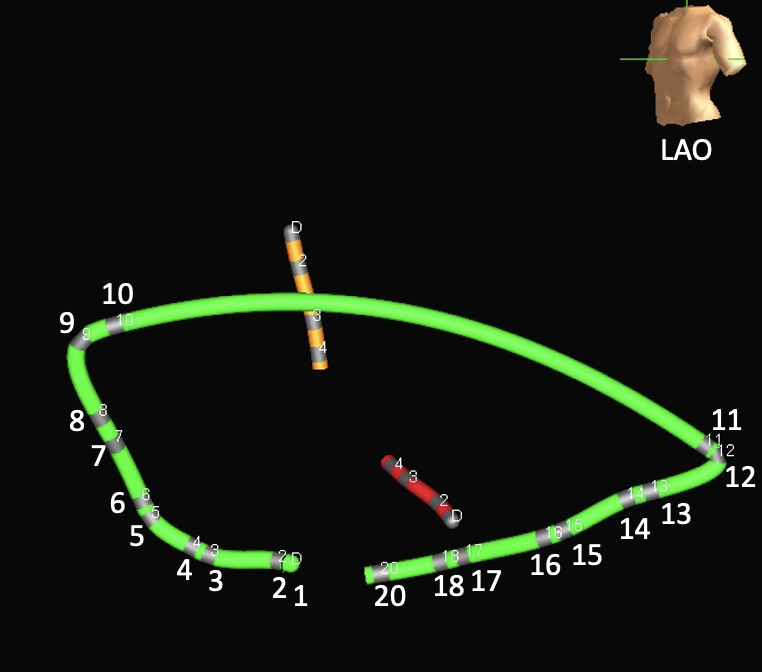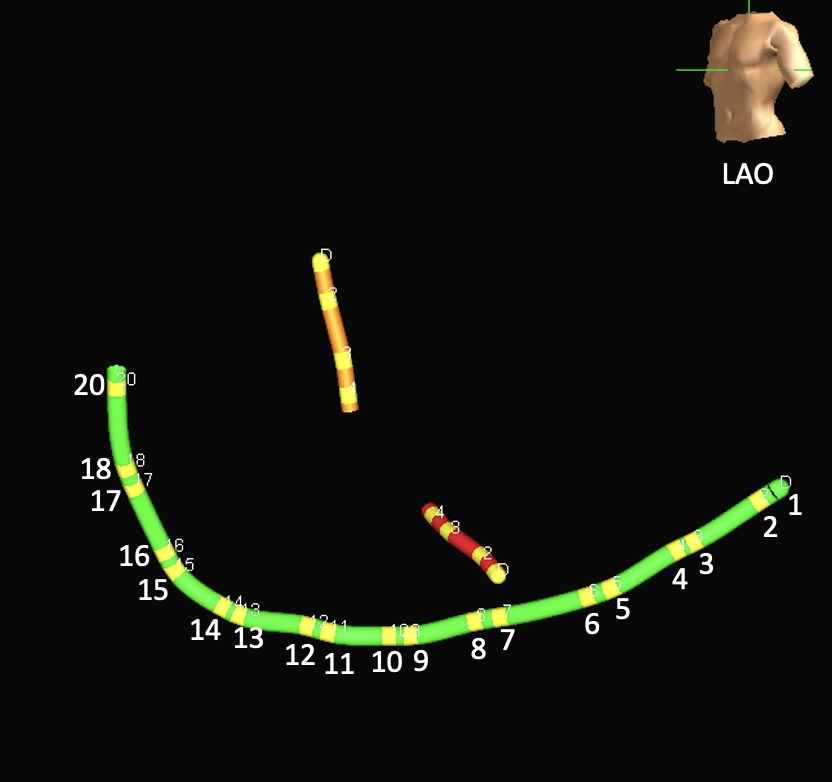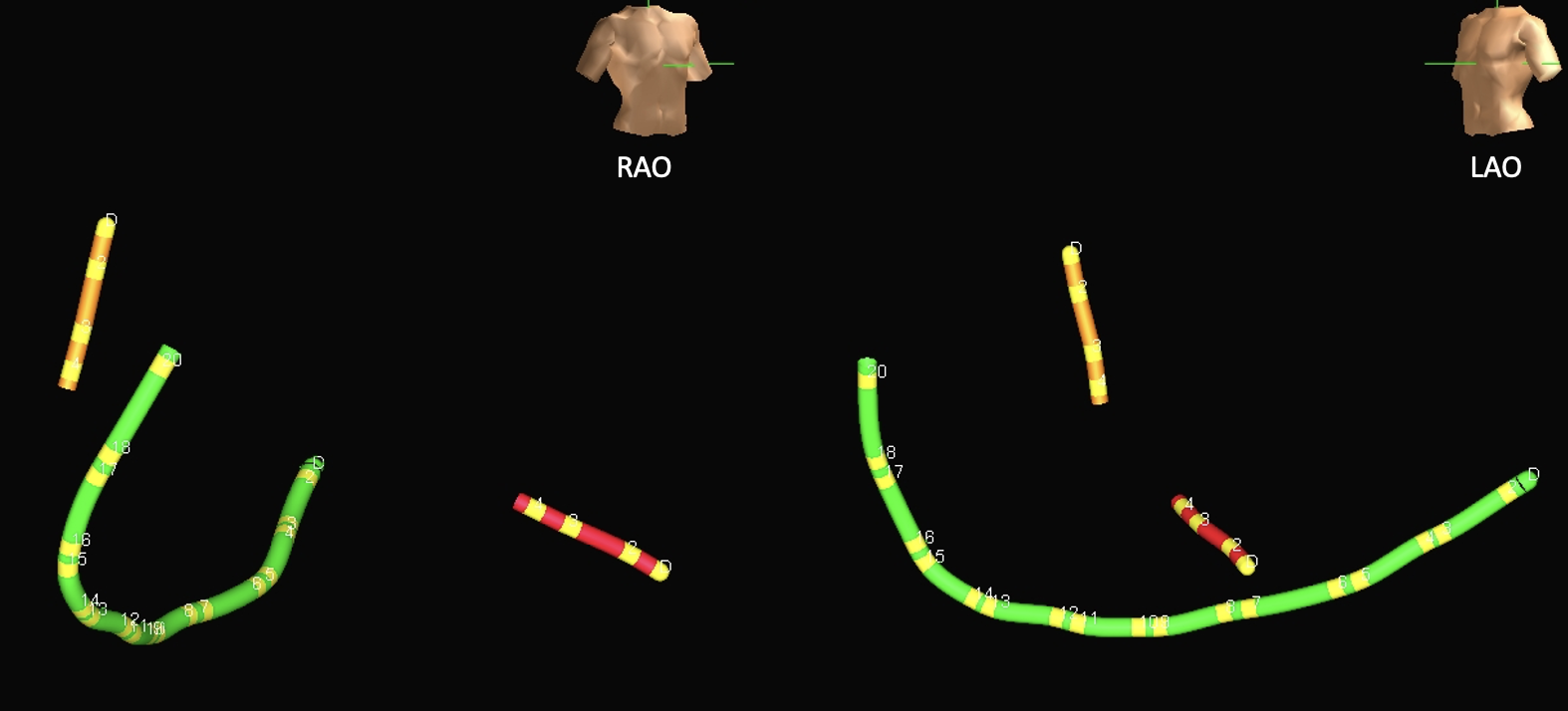This week’s electrogram:
This patient was brought into the EP lab for ablation of typical atrial flutter. She has had no previous ablations and was in normal sinus rhythm when placed on the monitor. The following electrogram was recorded at soon as the catheters were placed.
The DUO catheter is a duo-decapolar catheter in the RA in from the lateral wall, through the cavotricuspid isthmus and the distal tip in the coronary sinus. There is also a quadripolar His and RV catheter.
What is observed?

Does this make sense?

Notice how the Duo-decapolar is “split”… Let’s look at the 3D mapping image?

Notice the large space in the catheter… it is plugged in incorrectly. The end of this particular catheter has two connections each with its own decapolar cable. In this example, the proximal electrode cable was plugged into the distal and vice versa.
Much Better…
The catheter connections were switched and now the duo-decapolar appears to be correct, except… notice electrode 19 is missing. This may have been turned off due to noise/artifact.

Here is the associated electrogram:

Now the duo-decapolar appears correct for sinus rhythm. But… the His doesn’t look correct. Notice how the distal His A comes before the proximal? This is more prominent on the last impulse. Again, let’s use our 3D map to see why (as well as your electrogram knowledge).

The His catheter is not in the His position. It is positioned near the SA node, which is where you would place the HRA catheter. In the RAO view, the His catheter will be anterior crossing the tricuspid valve. In LAO, it sill be at the septum pointing directly at you as this view is looking through the valves.
Catheters are often placed in different areas of the heart for pacing and recording. For example, this quadripolar “His” catheter is placed at the location of the SA node for initial testing and then will be repositioned at the correct His placement.
What’s the lesson?
Don’t just go by the labels, look at the signals. The His catheter should have a small A, His, and large V.




Very informative. Thank you!